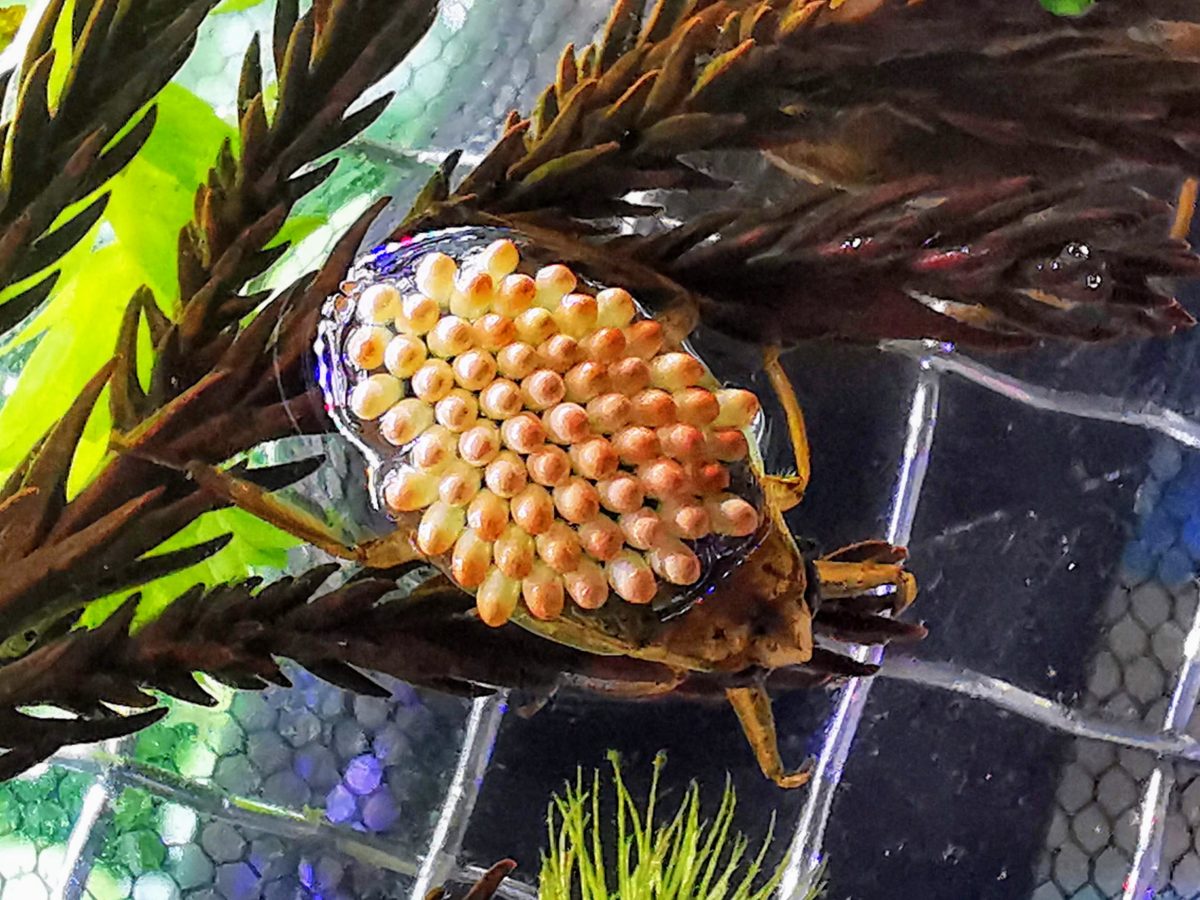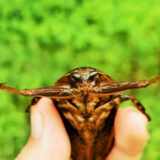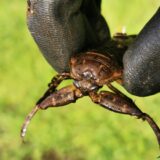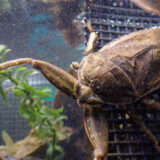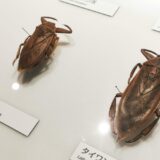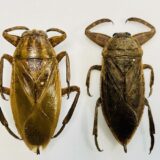The Belostomatidae, a family of Hemiptera aquaticus, is divided into two major groups, the Lethocerinae and the Belostomatinae.
Paternal care of the Giant Water Bug
Giant Water Bug is famous for its habit of having the male take care of the eggs. The method of egg care differs between subfamily Lethocerinae and subfamily Belostomatinae.
In subfamily Lethocerinae, the female lays the egg masses on plants or stakes above the water, and the male protects and waters the egg masses.
In subfamily Belostomatinae, the female lays her eggs on the male’s back, and the male often brings the eggs to the surface to assist in breathing while waiting for them to hatch.
In both subfamily Belostomatinae, the eggs do not hatch if they are completely submerged or in an environment without water supply.
Subfamily Lethocerinae
Subfamily Lethocerinae are big aquatic insects distributed throughout Southeast Asia, Africa, Oceania, and the Americas.
There are more than two dozen species of Lethocerinae in the world, mainly in the genus Lethocerus.
Lethocerus grandis and Lethocerus maximus, which inhabit the Amazon, are particularly big. Both species are the biggest in the world at over 10 cm in length.
Subfamily Belostomatinae
Subfamily Belostomatinae are small aquatic insects distributed throughout Southeast Asia, Africa, Oceania, and the Americas.
The subfamily Belostomatinae is further divided into the genera Abedus, Appasus, and Belostoma.
Most of them are 2-3 cm in size, but the African Hydrocyrius is a big species, reaching 5-7 cm in length, comparable to the Lethocerinae.



